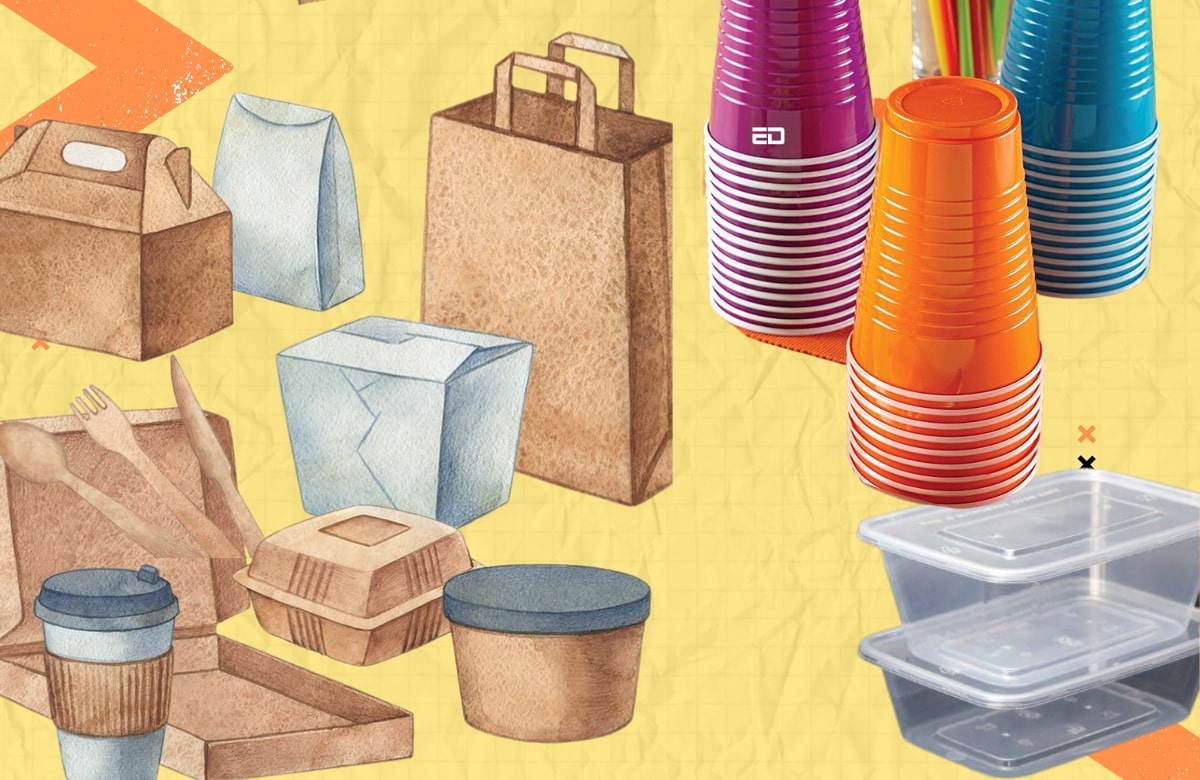In today’s environmentally conscious world, packaging has become a crucial battleground in the fight for sustainability. Plastic, once hailed as a convenient solution for packaging needs, is now seen as a major environmental villain, leading consumers and brands to seek greener alternatives.
Paper has emerged as a popular contender, touted for its “natural” image and potential for recyclability. However, the paper vs. plastic debate is not as straightforward as it seems.
The New York Times reported that in a series of recent studies, researchers presented shoppers with the choice between two granola bars, one in a plastic wrapper enclosed in additional paper and the other in plastic-only packaging.
Surprisingly, a significant majority chose the plastic-plus-paper option, despite both bars containing the same amount of plastic.
The Illusion of Green
One of the reasons driving the preference for paper packaging over plastic lies in the prevailing vilification of plastic as an environmentally damaging material, especially for single-use packaging. Polling consistently finds that consumers want to see plastic replaced, leading to its social unacceptability.
This has made consumers more inclined to view paper packaging as a more “natural” and sustainable choice, even though it may not always be the most eco-friendly option.
The Pursuit of Sustainability
Amidst the push for sustainability, many brands have turned to paper as an alternative to plastic. However, the sustainability of paper packaging is not as straightforward as it appears. A recent study by McKinsey & Co. revealed that paper cartons, which often require plastic lining, can generate 20% more greenhouse emissions over their life cycle compared to plastic jugs.
Similarly, some paper solutions, such as food-grade paper packaging, are often lined with plastics, rendering them non-recyclable or recyclable in only limited locations. This challenges the notion that paper is always a greener choice.
Read More: These Most Common Forms Of Everyday Plastic Is Now Entering The Human Blood
Plastic Packaging’s Hidden Potential
Contrary to popular belief, plastic packaging isn’t always the recycling disaster it’s made out to be. PET, the resin used in water and soda bottles, is highly recyclable and in high demand for various manufacturing purposes.
In fact, there are over 180 plastics recyclers in the US handling PET and other resins, indicating a growing commitment to recycling. However, challenges remain, such as the disqualification of materials due to excess food scraps, whether in plastic or paper packaging (NPR).
The Challenge of Sourcing Sustainable Paper
As demand for paper packaging grows, questions arise about the sustainability of sourcing raw materials. The production of virgin papers for packaging involves the destruction of carbon-sequestering trees, raising concerns about deforestation. While sustainable forestry is an option, consumers and brands will increasingly face questions about whether single-use paper packaging represents the best use for slow-growing resources.
Moving Towards Transparency
To address the complexities surrounding sustainable packaging, the call for transparency becomes increasingly important. Brands should consider disclosing the emissions associated with their packaging decisions, and placing the numbers alongside recycling symbols.
This move towards environmental “nutrition labels” could encourage innovation and competition among brands, driving them to reduce their overall packaging and make more informed choices.
As consumers and brands grapple with the question of paper vs. plastic, it becomes clear that neither option is a perfect solution. Both have their pros and cons, and the path to true sustainability lies in understanding these complexities. By fostering transparency, encouraging innovation, and embracing more holistic approaches to environmental impact, we can move closer to a future where packaging choices are truly environmentally friendly.
Image Credits: Google Images
Feature Image designed by Saudamini Seth
Sources: The Economic Times, Swiftpak, ABC News
Find the blogger: Pragya Damani
This post is tagged under: paper, plastic, paper vs plastic, paper packaging, plastic packaging, environment
Disclaimer: We do not hold any right, copyright over any of the images used, these have been taken from Google. In case of credits or removal, the owner may kindly mail us.
Other Recommendations:
Watch: Why Rejecting To Use A Plastic Straw Helps The Planet And Oceans




































